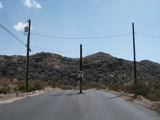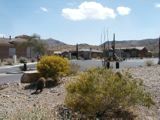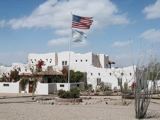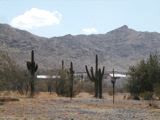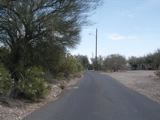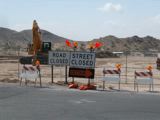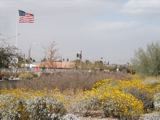Seven Fridays in South Phoenix
Observations, Reflections, and
Photographs by Matthew Alan Lord
“Plot Outline: A
suburban American family is being stalked by a group of psychotic
people who live in the desert, far away from civilization.”
-From IMDb website covering the 2006 release
of The Hills Have Eyes
(Accessed at: http://www.imdb.com/title/tt0454841/
)
The Hills Have Eyes
Photographs
for
The Hills Have Eyes
To
say that I am not a horror movie aficionado is to master the art of
understatement. I have not seen the original 1977 “classic horror
movie” The Hills Have Eyes. I have no plans to see the
remake that was released on the last day set aside for fieldwork
this semester. Nevertheless, the title --and the plot outline in
the epigram above-- suit my musings on this part of the community.
I
beg the reader’s indulgence since I have not resorted to including
dictionary definitions of words in papers heretofore, but here’s a
fifty-cent word that merits discussion: dystopia. According to
Merriam-Webster (now online at
www.m-w.com), this is “an imaginary place where people lead
dehumanized and often fearful lives.” We’ve been presented with
ample evidence this semester that those outside of South Phoenix
have long seen the place in this manner. Some of the materials
we’ve read and the occasional comment in class have tended this
direction. I wonder how much of the surprise in earlier classes’
web pages arises from students having their dystopian views of South
Phoenix challenged.
Something that Aloy and I noticed
was missing from their web pages was an investigation of those parts
of South Phoenix that are more nearly utopian. Innumerable course
web pages discuss conditions in the poor and more modest
neighborhoods. Over the years, students have interviewed many
residents from these areas. Several also have visited the newer,
middle class subdivisions. It seemed, however, that no one had
tried to “give voice to” (as social scientists are prone to say) the
South Phoenix upper class, or at least upper middle class, or to
represent their neighborhoods on their web pages.
